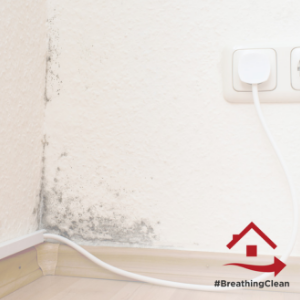Suspect Mold Growth? Check the Air Ducts
Mold is all around us in nature, but you don’t want to see it growing in your home. Most mold is unmistakable, but often times it goes unnoticed. That’s because mold can be passed off as dirt or be hidden away in a spot that is not easy to see. Before you can tackle mold it’s important to know what you’re looking for and where to find it.
What Is Mold?
Mold is a type of fungus consisting of small organisms that can be found almost anywhere. In small amounts, mold spores are usually harmless, but they can start to grow when in contact with a damp spot in your home. When growing on a surface, mold spores are released into the air where they can easily be inhaled.
How Does Mold Impact Your Indoor Air Quality?
Most of us spend a majority of our time inside. The air that we breathe in our homes, schools, and offices can put us at risk for serious health problems. When mold grows on surfaces, it consumes building materials and can produce chemicals such as mycotoxins and microbial volatile organic compounds (MVOCs), some of which are toxic to humans. Children, seniors, and those with preexisting health conditions are most susceptible to these types of indoor air pollutants but, anyone’s health can be affected.
How to Spot Mold:
1: Sight and Smell
While visible growth may seem like an obvious sign you have a mold, sometimes small amounts of mold growth can go unnoticed as people assume it is dirt or soot. When mold is hidden away in your home, you may first notice a moldy scent
2: Common Places to Find Mold:
- Basements, attics, and garages
- Underneath kitchen and bathroom sinks
- In the shower or bathtub
- Behind the fridge
- Around air condition units
- Wallboard or around windows that leak
3: Don’t Forget the Air Ducts
Your air ducts are an extremely important place to check for mold. Your air ducts act as the lungs of your home recirculating air on average 5 to 7 times per day. If mold is growing in your ducts, it can easily be spread throughout your home.
How to Keep Mold Away:
In order to keep your home mold-free you first need to identify the problem zones and correct them. Dry wet areas and fix any leaks. Prevent moisture with proper ventilation and monitor indoor humidity.
Prevention is key for avoiding indoor mold growth. Scheduling periodic air duct cleanings can ensure no mold is hidden in your home’s ductwork. Hire a NADCA-certified air duct cleaner, ease your mind about indoor air quality concerns and make sure your home is mold-free.

